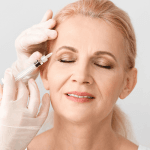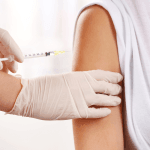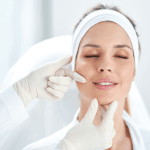Tretinoin and retinol, both vitamin A derivatives, are commonly utilized in dermatology due to their robust skin-renewing characteristics. While tretinoin is a prescription-strength retinoid noted for its ability to cure severe acne and stimulate collagen formation, retinol is an over-the-counter option that provides lesser but significant anti-aging and skin-improving advantages. Understanding these substances’ pharmacological distinctions, mechanisms of action, and clinical uses is critical for medical practitioners seeking to personalize treatments effectively and improve patient outcomes.
Mechanisms of Action and Clinical Applications
Tretinoin vs. retinol, although both vitamin A derivatives, differ significantly in their mechanisms of action and clinical applications. Tretinoin (all-trans retinoic acid) is more potent and directly affects cellular differentiation and proliferation. Retinol, on the other hand, undergoes conversion to retinoic acid within the skin, resulting in a slower and less intense effect.
This comparison highlights tretinoin’s superiority in treating severe skin conditions and its higher potential for irritation and other side effects. Tretinoin before and after results often showcase dramatic improvements in acne, reduced appearance of fine lines and wrinkles, and diminished hyperpigmentation, demonstrating its effectiveness.
Evaluating Efficacy and Safety of Retinol Serum
Retinol, a milder retinoid, is commonly found in over-the-counter serums and creams. Its popularity stems from its capacity to improve skin appearance with fewer side effects than tretinoin; hence, it is called the best retinol serum.
What is retinol good for? Retinol reduces fine lines, wrinkles, and hyperpigmentation and improves skin texture and tone. When selecting the best retinol serum, practitioners should consider the concentration of retinol, formulation stability, and patient skin type.
Factors to Consider for Optimal Patient Outcomes
Selecting the best retinol product involves balancing efficacy with patient tolerability. Medical practitioners should consider factors such as the concentration of active ingredients, formulation pH, and inclusion of soothing agents like niacinamide or hyaluronic acid.
Managing and Mitigating Adverse Reactions
Common tretinoin side effects include erythema, peeling, dryness, and photosensitivity. These effects can be managed by initiating treatment with lower concentrations and gradually increasing the dose. Additionally, advising patients to use moisturizers and sunscreen can mitigate these adverse reactions. Understanding these side effects is crucial for practitioners to ensure patient adherence and treatment success.
Guidelines for Optimal Application
Proper application of tretinoin is vital for minimizing side effects and maximizing benefits. When using tretinoin, patients should be instructed to apply a pea-sized amount to clean dry skin, avoiding the eyes and mucous membranes. Initiating treatment with every other night application can help the skin acclimate, gradually increasing to nightly use as tolerated.
Indications and Considerations
A tretinoin prescription is typically indicated for moderate to severe acne, photoaging, and hyperpigmentation. Practitioners must assess the patient’s skin type, history of skin conditions, and potential for irritation before prescribing. Monitoring patient progress, often documented through tretinoin before and after comparisons, and adjusting the treatment regimen is essential for achieving optimal results.
Tretinoin before and after refers to the visual documentation of a patient’s skin condition before and after using tretinoin. These comparisons typically showcase improvements in acne, minimized appearance of fine lines and wrinkles, less visible hyperpigmentation, and overall skin texture enhancement. Understanding how to use tretinoin correctly, including proper application techniques and frequency, is crucial for maximizing its benefits and minimizing potential side effects.
Tailoring Treatments
For the best retinol for sensitive skin, it is crucial to recommend retinol products that minimize irritation while providing efficacy. Formulations with encapsulated retinol or those combined with soothing agents can be beneficial.
Patient Counseling and Expectations
To answer the common question of patients about how long tretinoin works, patients often seek quick results, but setting realistic expectations for tretinoin therapy is essential. Visible improvements typically begin after 4-6 weeks of consistent use, with more significant changes observed after 12 weeks. Counseling patients on this timeline and encouraging adherence can help maintain their commitment to the treatment plan.
Practical Tips for Patients on How to Apply Tretinoin:
To enhance patient adherence and minimize side effects:
- Provide clear instructions on how to apply tretinoin.
- Emphasize starting with a small amount, applying it to clean, dry skin, and avoiding excessive use.
- Encourage gentle cleansers and moisturizers, and stress the significance of daily sunscreen application to protect the skin from UV damage.
Frequently Asked Questions (FAQs)
How should I determine whether to prescribe tretinoin or recommend an over-the-counter retinol product?
The decision depends on the patient’s skin condition, sensitivity, and desired outcomes. Tretinoin is suitable for patients with severe acne, significant photoaging, or hyperpigmentation, while retinol is better for those with mild to moderate skin concerns or sensitive skin. Assessing the patient’s history and conducting a thorough skin examination will help make an informed choice.
What are the main differences in the mechanisms of action between tretinoin and retinol?
Tretinoin is an all-trans retinoic acid and acts directly on the skin, immediately influencing cellular turnover and differentiation. Retinol, conversely, is a precursor that converts into retinoic acid within the skin, leading to a slower onset of action. This difference accounts for tretinoin’s higher potency, faster results, and increased potential for irritation.
What are the common side effects of tretinoin, and how can they be managed?
Common side effects of tretinoin are redness, peeling, dryness, and photosensitivity. To manage these, start with a lower concentration and gradually increase it. Recommend patients to use a gentle cleanser, moisturize regularly, and apply broad-spectrum sunscreen daily. Using a night-time application and using it every other night initially can also help reduce irritation.
How long does it typically take for patients to see results from tretinoin?
Patients usually start to see improvements in their skin after 4-6 weeks of consistent use, with more noticeable changes occurring around the 12-week mark. Setting realistic expectations and encouraging adherence to the treatment plan is crucial for patient satisfaction.
How should tretinoin be applied to maximize efficacy and minimize adverse effects?
Instruct patients to apply a pea-sized amount of tretinoin to clean dry skin, avoiding the eyes, nostrils, and mouth. Starting with every other night application can help the skin acclimate. Pairing tretinoin with a moisturizer and using sunscreen daily can further minimize adverse effects.
Are there any specific patient populations or conditions where tretinoin use is contraindicated?
Tretinoin is contraindicated in pregnant or breastfeeding women due to potential teratogenic effects. Patients with eczema, rosacea, or susceptible skin may also experience worsening of their conditions. Always review the patient’s medical history and medications to avoid adverse interactions.






